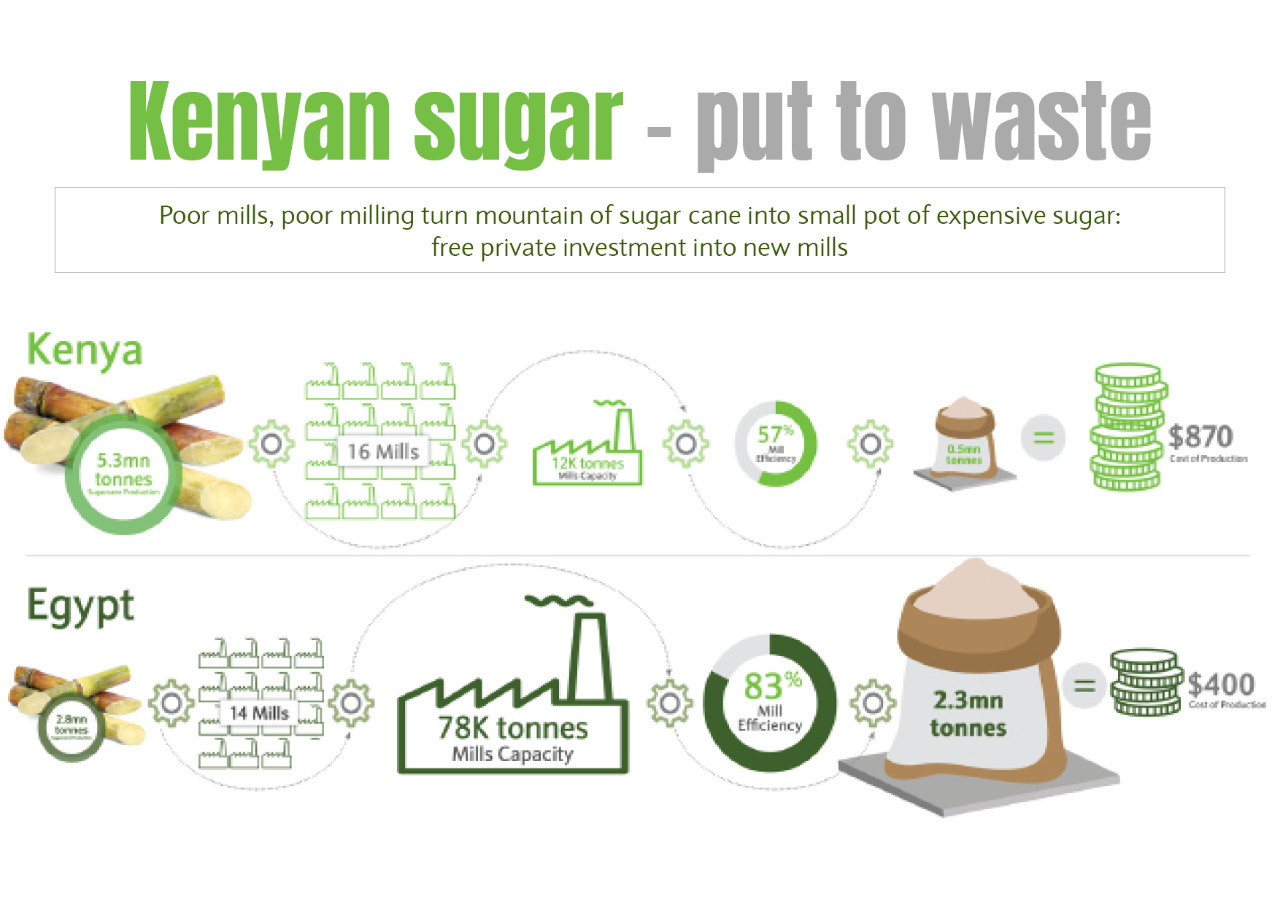
The sugar industry in Australia was highly regulated. Sugar cane was grown along a coastal strip from northern New South Wales (NSW) to northern Queensland (Qld), and processed in mills spread along this coast. All cane land was assigned to a particular mill. A mill could only process cane from its assigned land, and cane from a plantation could only be processed at its assigned mill. This is known as zoning. Annual quotas were set for cane harvests and mills’ production of crushed raw sugar, and prices agreed.
However, the industry failed to thrive. Exports fell steadily, by an average 0.7 per cent a year. Sugar cane production was falling by an average 2.6 per cent a year. Yields were also falling, and so was sugar production. Year after year the industry declined.
In 1991, Australia abandoned zoning. The result was a phenomenal take off in its sugar industry, thanks to a surge in farmer participation, and in mill efficiency. As a result of both, raw sugar production doubled in just four years from 2.78m tonnes in 1991, to 5.25m tonnes by 1995.
On the farmer side, sugarcane production grew by an average 13.4 per cent a year after the abandonment of the zoning. The number of cane growers, which had grown by 12 per cent across the entire 20 years from 1970 to 1990, jumped by 14 per cent in just four years from 1992.
Farmers increased the area to sugar cane, from an average of 65 hectares per farm in 1990 to an average of 75 hectares by 1995. Yields rose too, by an average 10.1 per cent a year (where they had been falling by an average 4.4 per cent a year during zoning), seeing the average tonnage of cane per farm rise from 3,500 tons in 1980 to 5,500 tons in 1995.
At the same time, mill efficiency shot up. The average crushing rate per mill rose from 350 tons per hour (TCPH) to over 500 tons in 1995. As a result, the average tonnes crushed per mill rose from 750,000 tons before 1992 to over 1.4 million tons by 1995.
Zoning was deterring farmers and holding back mills. Once it was removed the industry’s efficiency soared and its cost of production plummeted.
.
.
